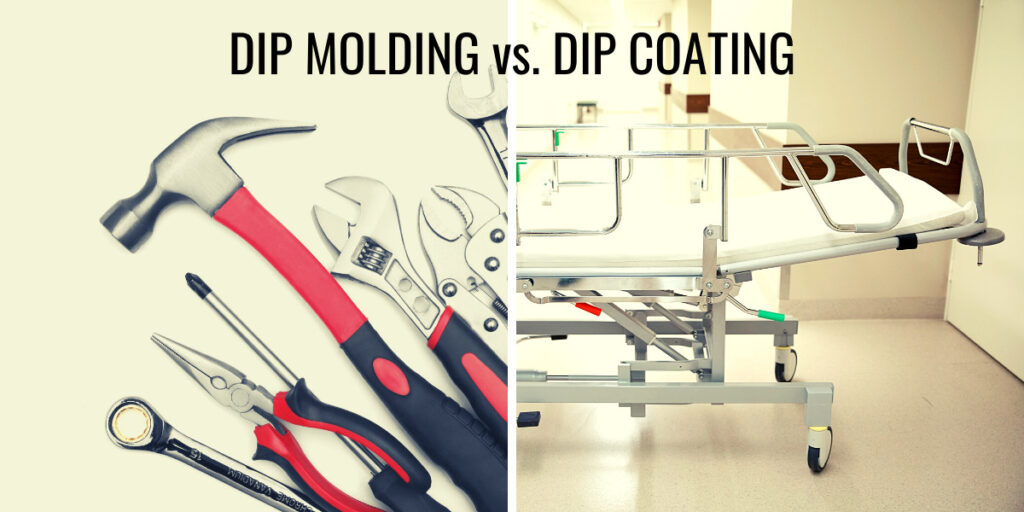Mankind has been making tools and parts since the stone age, using innovative methods to shape items to achieve the goals he has in mind. Dip molding and dip coating are two more modern options, and each requires a specific process to deliver on its objective. These two processes are quite different from each other, in spite of the fact that they sound similar. Here are some of the ways you can use them to enhance your products.
Dip Molding vs. Dip Coating
Dip molding is the process of dipping a metal shape or tool, also called a mandrel, into a liquid form of PVC, polyurethane or neoprene. At Midwest Rubber Company, we then use a chemical process to cause the material to coagulate or become solid. The mold is separated from the material, leaving behind the shape created by the mold.
With dip coating, a part is dipped into the chosen liquid, which then solidifies to surround it. The original part stays inside the new rubberized exterior. The coating protects the part and softens the edges and surface to make them safer and more comfortable to touch, easier to manipulate, and more durable.
Uses for Dip Molding
The dip molding process is mostly used to develop all-rubber components, which don’t require a rigid metal inner. You can dip a variety of shapes, sizes, and wall thicknesses, and choose from a range of raw materials supported by Midwest Rubber Company. Parts manufactured for our customers in the automotive industry include:
• Gear shift boots,
• Convoluted boots, tubes and sleeves
• Winter windshield wiper hoods
• Inflatable cushions
• Caps, seals, and bellows
How it’s done: The mold is a single-piece form with a core that is dipped into your material of choice. When it’s coated enough for your purpose, we remove the form and solidify the part using the most suitable method. After that, the component is cooled and trimmed to deliver the final product.
This flexible process has a range of uses in the medical, agriculture, construction and military environments. We’ll work with you to test your design to make sure it’s durable and provides the solution you need. Dip molding is ideal for small to medium-run batches, and the relatively low costs involved help you to stick to your budget.
When to Use Dip Coating
Dip coating is also used in numerous industries, to round off and soften sharp edges and corners while creating a smooth, attractive and durable finish. This process is used most frequently to add new layers to parts such as:
• Door handles and levers,
• Hand grips on tools,
• Furniture such as storage shelves or footings,
• Electrical insulation,
• Children’s outdoor play equipment, and
• Handles for medical instruments.
How it’s done: The items are cleaned to prepare them for coating, and then dipped in the material you choose. The time the parts spend in the liquid depends on the thickness of coating you need. Once they are thoroughly coated to the right specification, the finished components are removed from the liquid and solidified using our carefully engineered process.
Benefits of dip coating include the option to choose almost any color and finish, as well as the ability to easily adjust the thickness and hardness of the coating. The process generates very little waste, making it quite cost-effective. Parts with almost any shape can be coated, and the process is faster and simpler than injection molding. For medical applications, the coating delivers the reliable, antimicrobial barrier needed that can stand up to frequent disinfecting.
The Take-Away
Both dip molding and dip coating are flexible, highly customizable methods of creating the parts and finishes you need for your unique product or service. These processes are clean, safe, and widely used in industrial, business and consumer products. Midwest Rubber Company’s methods and techniques ensure that our clients receive the help and support they need to create exceptional products to fulfill their requirements.
For more information about Midwest Rubber Company’s dip molding and dip coating techniques and how we can help solve your problem, please click here to contact us.
